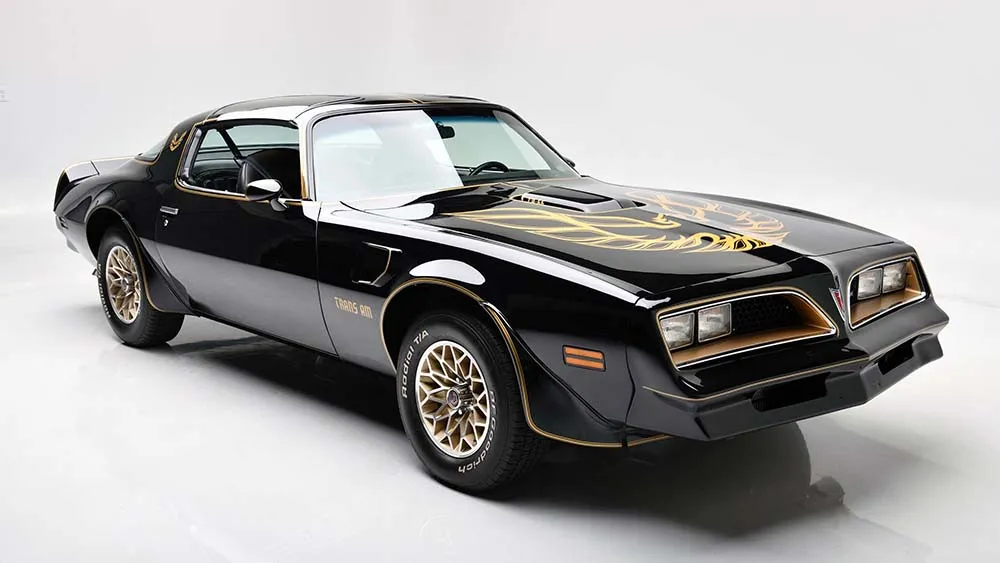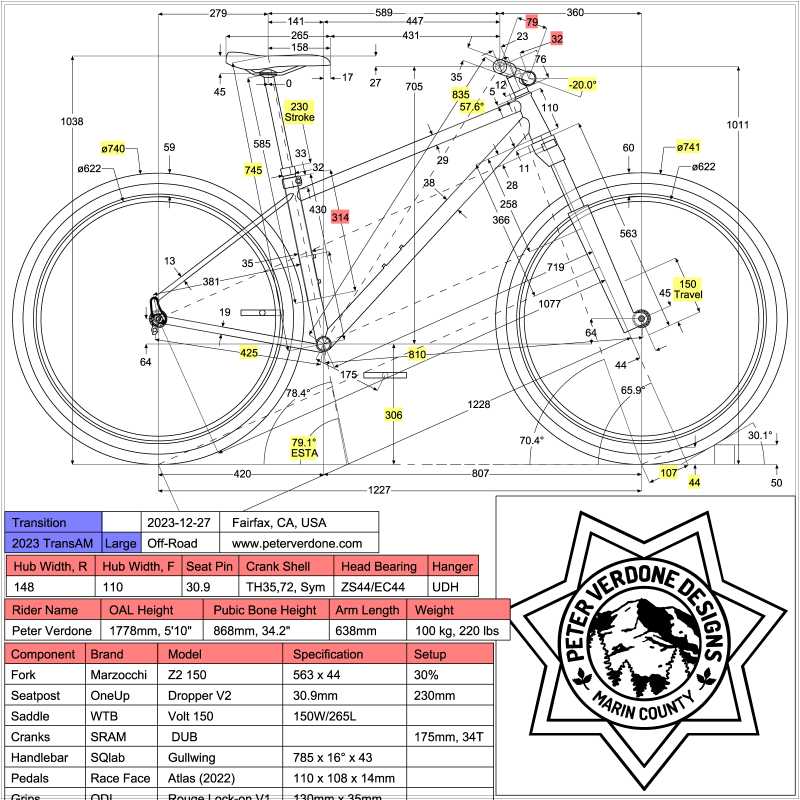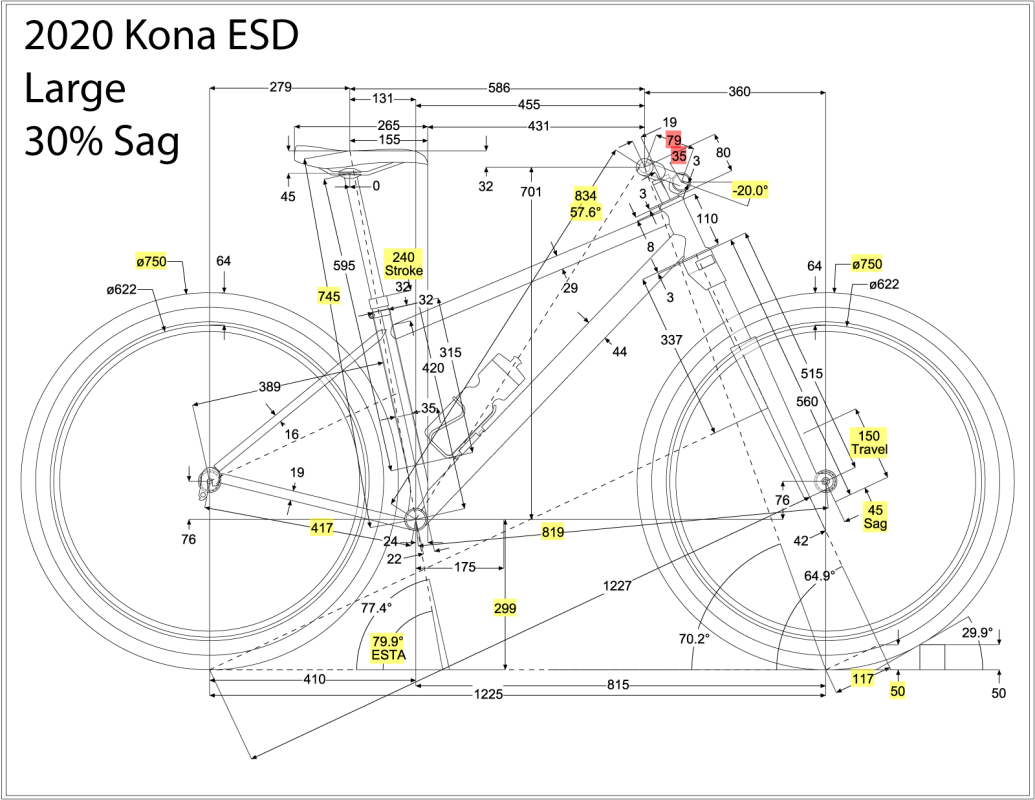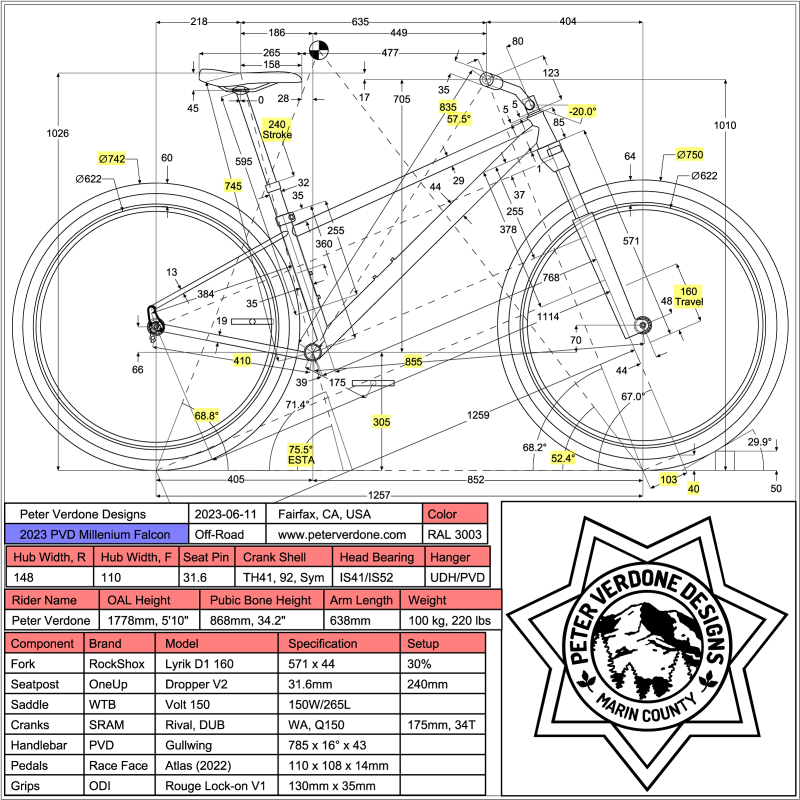Back on November 2, 2023, Transition bikes dropped their new hardtail bike, the TransAM. This is a bike carrying a name that they’ve used for hardtail models many times in the past.
While I try to keep up with comments on some of the more interesting products that come onto the market, I just didn’t really look up from my work for this. I’ve been super busy and doing some cool stuff. And, while this bike isn’t as eventful as some, still it should be discussed.
My YouTube feed woke me up to this. Hardtail Party released his review of the new bike today.
So let’s take a look at the actual geometry for this bike. What’s good? What’s bad?
I’ve put the geometry into BikeCAD and fit it to my preference with 30% sag to reflect how the bike is going to generally feel. These are published and not validated numbers.
Like most bikes in this class, the real deal killer is the effective seat tube angle. 79.1° is a literal pain cave before we even start pedaling. This may be fine in the PNW or for the very young and strong but for anyone else, it’s a non-starter.
I’m able to just fit on a large with the SQlabs 30×16 bars and a 32mm stem. Like most bikes on the showroom floor these days, the first thing we do is throw the 35mm bars and stem into the trash and fit with some properly swept 31.8mm bars. Fit matters.
The fork travel and head angle are decent. The front center and flop are in the usable and lighter side of things. It’s probably going to feel good compared to most of the other options.
For some reason, Transition bucked recent trends and kept an antiquated and fairly long seat tube. This restricts the dropper post stroke to 230mm for me. Just 10-20mm shorter would have really opened things up for folks.
Shamefully, Transition specified this frame with 30.9mm seat pin. A modern bike would use 31.6mm. This choice makes life artificially harder and more expensive for setting this bike up. This was a lesson that was learned more than a decade ago and it’s hard to imagine that some still haven’t got it.
I really wish that the frame on this bike had been produced in aluminum rather than steel. It would have been lighter, stronger, cheaper, and ride better. The steel frame fashion has to end sometime soon. This is foolishness.
Sliding dropouts are a joke on a bike like this. Make it cheaper and better. Fix the wheel all the way forward. It’s not Y2K, almost nobody rides singlespeed anymore.
The worrying detail is that the geometry is specified with much smaller tires than almost anyone in the target demographic is going to consider or that the bike comes with. 2.3″ tires are a bit dated for this crowd. I use a 2.36″ tire in the rear, I understand that my goals are different. Thus, this is going to run a little higher and floppier than we would infer from the print when spec 2.5″F/2.4″R tires are used.
A few years ago, I looked at the El Roy and the RSD and shared them on social media. These were 2020 models so some has changed. I updated my prints to reflect a current setup preferences.

The seat tube on the Marin El Roy is just tragic. Combined with the absurdly long chainstays, this is going to feel all kinds of fucked up. Again, the bad 30.9mm seat pin. The front end is very floppy and it’s the shorter fork option in this group. But we should be scared, the geometry is given for 2.8″ tires. WTF. This is not the bike to buy.
Marin screwed up another bike recently that I wrote about. How so much can go right but one mistake ruins a bike.
The Kona ESD is probably more comparable to the transition (as we would expect). A slightly steeper seat tube and shorter rear end and longer front end. This is the faster bike. It’s just a shame that the front end is floppier. I still think that the seat tube is going to render this a pretty bad experience for anyone over 20 years old.
It even let’s me use a 240mm stroke dropper post (check insertion room!). More, The Kona is spec’d with a proper 31.6mm seat post, setting this to a higher end above the previous two.
Still, stop with the stupid sliding dropouts.
How would this stack up against my 2023 PVD Millennium Falcon?
Of course, I’m bias here but I’ll point out some key things.
The front center, and fork travel make this bike obscenely faster than the TransAm. At the same time, the low flop has the Falcon flowing nicely on trail. The short rear end helps get the bike around corners and loft the front with ease. At 75.5°, the effective seat angle is going to feel just ok on climbs but so much better EVERYWHERE else in the ride. I’m NorCal, that matters as we have to pedal a lot at partial climb here. I even have room for a longer dropper than 240mm when they are released. There are a ton of other points, but that isn’t the point of this post.
Better tube selection on the Falcon is going to mean that it tracks better and is more comfortable than the production bikes. Non-sliding dropouts means that it can also be taken seriously on the trail.




